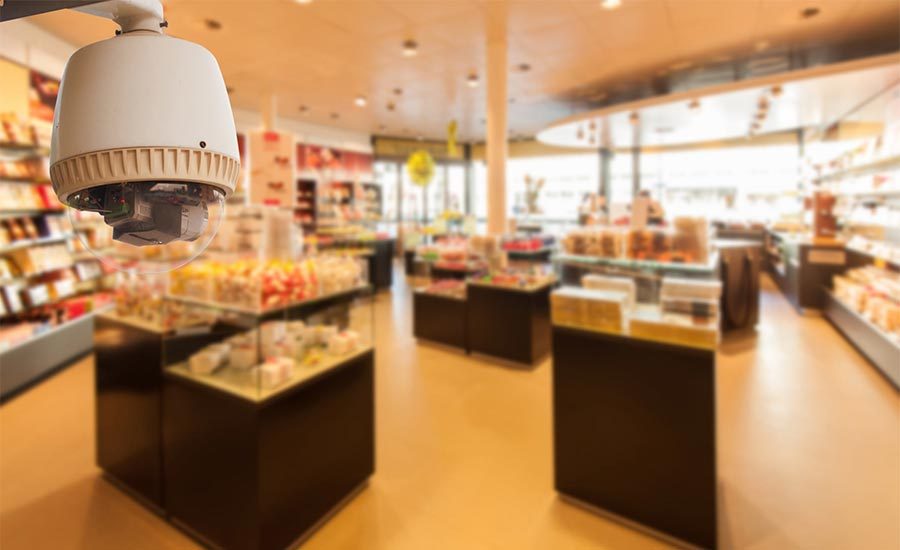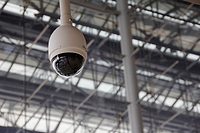Opening a retail shop or adding a new location to your restaurant franchise? Most retailers in this situation are not constructing from the ground up, they’re moving into an existing building or strip mall space that’s already wired for video surveillance. Growing a business is exciting but dealing with legacy systems can be frustratingly cumbersome and complex. These outdated systems likely require multiple logins and/or hard-to-crack VPN connections, don’t have mobile capabilities, and leave end users with no way of knowing if security cameras are online or hardware is functioning properly.
Most irksome, perhaps, is the fact these legacy systems simply don’t allow owner/operators to do what they need to do to run the business efficiently and effectively, generate more revenue per square foot, improve the customer experience, provide better training to employees, reduce liabilities, boost compliance in regulated industries, and lower costs.
It’s not a pipedream. Thanks to advancements in cloud video surveillance, retailer security leaders who want a high-performance video surveillance system do have alternatives to ripping and replacing and expensive upgrades. Increasingly, jewelry or clothing boutiques or chains, neighborhood gyms, furniture stores, haircut franchise businesses, liquor or drug stores, and other retail operations with multiple locations spread across a wide geographic area are turning to a cloud video management system (VMS) to address their needs. For both heightened security and business optimization, here’s what retailer security teams should look for in a video management system and provider.
Existing infrastructure: Checking to see if you can use your existing cameras and cabling should be at the top of your list of items to discuss with potential VMS providers and installers. Many locations already have existing cameras and cabling. If this is the case, it would behoove you to find a video surveillance vendor that can work with what you have, but also bring you into the 21st century. There are several ways to affordably upgrade your legacy system to a high-performing true cloud VMS by reusing most, if not all, of your existing cabling infrastructure and cameras.
A true cloud VMS will also allow you to mix and match new cameras with legacy cameras or bring a completely new installation together with a legacy system to allow you to keep an eye on your business from anywhere at any time. Be aware that some vendors require you to use their cameras.
Historical viewing: Today’s legacy video systems require monotonous monitoring or hours of searching after each triggered event to extract useful information. With a modern VMS, you can conduct historical, forensic searches instantly and effortlessly. Your VMS should give you the ability to quickly view historical video, as well as the ability to download and share that video to swiftly identify and resolve incidents, such as vandalism and theft. Historic video can also be used for employee training. For example, a camera on the make line of your quick serve restaurant could uncover potential food shrinkage issues and help you illustrate to employees the right and wrong way to assemble orders.
Bandwidth management: Another inherent challenge with moving into an existing space is internet bandwidth. Bandwidth refers to the available speed of your internet protocol (IP) network. Everyone has different bandwidth, and access to high internet speeds is not yet universal.
If you’re located in a strip mall, for example, you're sharing the available bandwidth with tens and possibly hundreds of other retailers during business hours. Bandwidth usage is often stretched thin to accommodate everyone. In this case, you should be able to tell your surveillance system to continue to record and store footage on site, only moving video footage to the cloud after hours, when bandwidth is more readily available, resulting in minimal impact on your operations. With increased adoption of 5G, more retail outlets are implementing wireless to enhance security, especially in remote or rural locations or when the cost to run cable is prohibitive.
Body-Worn Cameras for Retail
Most retailers have heard of body-worn cameras, but most have not considered how this technology can be applied to their business. Body-worn cameras can be a simple but extremely valuable add-on to a security system. Inside or outside of an establishment, body-worn cameras dissuade aggression, improve accountability, reduce false accusations, and capture evidence for criminal convictions.
The cameras are used to livestream and remotely monitor staff in real time. Because the employee “wears” the camera, they’re helpful whether employees are operating a curbside pick-up operation or delivering to a residence.
There’s not a lot of training required for the business owner or retail staff. And the cameras can help associates and store managers do their jobs and stay accountable. Best of all, body-worn cameras can improve customer service.
Centralized management: Select a surveillance system that allows you to easily delegate access, revoke access, and track user activity of the cloud VMS from your web browser. For example, as owner/operator, you may want access to all cameras at all 100 locations. You may want to give your regional managers access to just the cameras in their regions, and individual store managers, just visibility into their store cameras. This ability to quickly and easily assign and revoke access and permission levels is especially valuable in retail, where you're likely grappling with high turnover, seasonal surges, and transient workforces.
Mobile viewing: Many owner/operators need visibility into multiple locations spread across a wide swath of geography. A cloud VMS gives users access to multiple locations in a single platform.
Analytics: Advanced analytics turn your video security system into a powerful optimization tool. Retailers receive visibility into the day-to-day operations of a store, while also gaining insight into opportunities for security and customer experience improvement.
For example, identify how many people visited a location, peak business hours, and how often consumers passed a display with People Counting analytics. Using this analytic enables you to make on-the-fly staffing decisions, moving employees from slow stores to busy ones, as well as inform staffing, long term. It also gives you insight into customer traffic flows and behaviors, informing your store layout. Other valuable analytics for retail operators include Loitering, which can help reduce vandalism and break-ins by identifying people and cars who linger longer than your configured dwell time; Camera Tampering, which keeps you alerted to cameras that are blocked, moved, or otherwise tampered with; and Line Crossing, which detects when vulnerable areas are breached and notifies you in real time.
Additional use cases that emerged in 2020 with the global pandemic include monitoring physical distancing and occupancy levels, ensuring personnel and customers are wearing their face coverings, and improving the customer experience at drive-through or curbside delivery.
Alerts: In a true cloud VMS, alerts can be added to any of your analytics and sent directly via text message or email to predesignated employees. Users should also be able to designate a specified period of time when alerts are active. For example, you could have alerts only when the store is closed. Deep-linked, time-stamped footage emailed from custom alerts should take you directly to the recording of the events. Quickly pinpoint when an incident or theft occurred and share video evidence with the appropriate authorities.
Unlimited scalability: Adding locations and cameras, increasing the number of users, adjusting camera resolution, and extending video retention periods are just some of the reasons that multisite commercial customers and others demand a scalable solution. Traditional premise-based VMS systems may make it difficult to do this and lack the infrastructure and flexibility to meet these needs.
Cybersecurity: With your video surveillance system connected to the internet, cybersecurity should be fully addressed by the cloud vendor, so you don’t have to worry about your data being breached. System cybersecurity should include:
- Secure encryption to buffered and locally recorded video
- Constant monitoring against threats
- No open ports or onsite firewalls
- No onsite software to patch (updates are automatic)
- Triple redundant storage for events
- Two-factor authentication
Open platform: When your cloud VMS has an open application programming interface (API) it enables you to integrate your video with other mission-critical applications. One of the most valuable integrations in the retail space is with point of sale (POS) systems. Because employee theft is one of the biggest issues management faces within the restaurant and retail spaces, integrating your POS and video surveillance to view sale and payment data in one place is a tremendous benefit. Owner/operators can quickly and easily search transactions and view the video tied to events, streamlining investigations into suspicious transactions.
Another valuable integration for retail with perishable goods is with temperature sensors. The temperature of your walk-in coolers, prep lines, and display cases, for example, could be constantly monitored using wireless temperature sensors that securely transmit their data to the cloud. Any time a temperature exceeds a pre-set threshold, you’re immediately notified by email, text message, or phone so you can look in on your operations to determine the cause and better prevent loss.
In conclusion, multisite retail owner/operators need to manage an increasing level of business complexity and change, more rapidly than ever before. Particularly if your organization is growing and expanding, there are options to put unify your surveillance and make it easier to react, conduct investigations and maintain situational awareness across locations. Today, your video surveillance system needs to provide business intelligence that can help you generate more revenue, improve the customer experience, provide better training to employees, reduce liabilities, ensure compliance in regulated industries, improve operations, and reduce costs. Video surveillance is a mission-critical investment in the future of your business.




